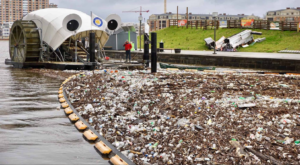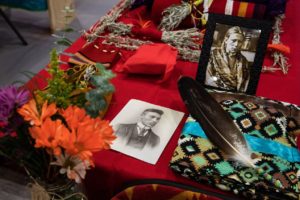Shakespeare’s “What’s Past is Prologue” suggests that history shapes our present and offers insights into the future. But what does Shakespeare have to do with crime?
Authors of crime fiction plot their characters in high-stakes situations, ensuring the reader cares about the characters and engaging the reader’s pursuit of problem solving. What could be higher stakes and what offers the reader a greater opportunity to solve a problem rapidly gaining in complexity, and potentially a crime against humanity, than resolving the serious threat of nuclear war?
Since the beginning of the Cold War, nuclear weapons have been one of the most existential global threats. I grew up during that time with great fear of a nuclear war destroying humanity. Like most high school students, I had read and was horrified by John Hersey’s Hiroshima. For the longest time after reading Hiroshima, I tried to imagine carbonized bodies and human shadows etched in stone, but it was unimaginable. I stopped imagining; easier, safer not to think about the suffering.
Years later, I met my Japanese American husband, Kent, and grew to know and love his parents and learn their stories. Kent’s mother was incarcerated in multiple camps during WWII. His father, also an American citizen, is a Hiroshima survivor. Sharing their remarkable stories with the world necessitated that I step into history: the researching, the imagining, the suffering. And something else shifted. What began as a desire to share their stories, became something far more important to me. Co-authoring Of White Ashes changed me. I developed an unexpected greater calling to effect positive change in our world. How? By promoting and attending pilgrimages and educating people about the WWII Japanese American incarceration and by doing my part to promote peace.
Two weeks ago, I had the great pleasure of attending a Jewish wedding, where the rabbi described her interpretation of the traditional breaking of the glass: “Glass is strong and yet fragile. Once broken, you can’t put it back together. Love and marriage are like that too.” Her metaphor can also be applied to the strength and fragility of our world. Today, the Doomsday Clock is at 90 seconds to midnight, with midnight referencing doomsday—a world-destroying catastrophe. We are now closer to midnight than at any point since the Bulletin of Atomic Scientists developed the design in 1947.
With 4,500 nuclear warheads, Russia is the world’s largest nuclear power. The U.S. follows with 3,600. These numbers are roughly 10% of the Soviet Union’s arsenal in the 1980s and the U.S.’s in the 1960s. However, today’s nuclear bombs are exponentially more destructive than the ones used on Hiroshima and Nagasaki due to advancements in nuclear physics, advanced weapon design with optimized explosive yields, and flexibility and accuracy in targeting due to advances in miniaturization and precision technologies.
The Doomsday Clock was advanced from 100 to 90 seconds to midnight on January 24, 2023: before the idea that nuclear weapons was normalized thinking, before Putin’s rhetoric began prompting fear that Russia might use tactical nuclear weapons on Ukraine, before Putin moved nuclear warheads into Belarus, before the Wagner Group’s armed mutiny in Russia and the uncertainty of Yevgeny Prigozhin’s whereabouts, and before creating chaos in Russia and increasing concerns over who might ultimately control the world’s largest nuclear force.
Experts are most worried about the absence of disarmament efforts and possession of nuclear weapons by volatile nations. And the risk of an accidental or unintended nuclear incident looms ominously, casting a dark shadow of uncertainty. This uncertainty, along with the increased likelihood of cyber-attacks on nuclear infrastructure, raises exponentially the risk of triggering a catastrophic accident. Princeton University’s Program on Science and Global Security developed a frightening simulation illuminating a plausible rapidly escalating nuclear war between the U.S. and Russia, estimating that more than 90 million people would die or be injured within the first few hours of the conflict.
The purpose of this essay isn’t to debate the criminality of the nuclear bombs used during WWII by the U.S. in Japan. We can’t change the past. But what about today? Is the use of a nuclear weapon a crime? The Assembly of the States Parties to the Rome Statute of The International Criminal Court was held in 2022 to address the increased risk of nuclear weapon use. Their conclusion: “Given the immense and indiscriminate destructive power of nuclear weapons and their wide-ranging catastrophic humanitarian consequences, the use of nuclear weapons would constitute a war crime under several of the provisionsoutlined in the Rome Statute.”
Addressing the current threat of nuclear warfare necessitates concerted efforts to prevent a nuclear catastrophe and safeguard global security. Governments and international organizations must continue disarmament initiatives, prevent the proliferation of nuclear weapons, and promote diplomacy and dialogue to defuse tensions and resolve conflicts. But what can we do at the individual level? We take self-defense classes to protect ourselves from attack, install security systems to protect our homes from invasion, and install anti-virus software to protect our computers. How on earth do we protect the fragility of humanity and our planet? I imagine that, like a good detective story, it begins with intention and problem solving. We can use the power of intention to consider the future we want and discover ways to come together as humans to find common ground for problem solving these difficult and complex issues. Have the intention to make a difference, be open to other’s experiences, and promote peace with our neighbors and within our world.
Are you interested in taking action? Start small or go big! Consider:
- Reading an article
- Picking out a book for your book club
- Visiting any number of websites, including The International Campaign to Abolish Nuclear Weapons, the United Nations Disarmament Commission, Youth Fusion, and Voices for a World Free of Nuclear Weapons
- Saying something—in an opinion piece or on social media
- Joining peace-promoting organizations
- Creating a grass-roots effort in your community
Learning my father-in-law’s story and then researching and writing about Hiroshima for Of White Ashes changed me. Through harrowing images, I gained invaluable insights into the horrors of nuclear warfare and now better appreciate the urgency of preventing its recurrence. Kent and I hope our readers will imagine what it might have felt like to live through a catastrophic experience like this and finish reading our historical novel with a deeper understanding of the profound impact of war, its aftermath, and the extraordinary resilience of our characters.
“What’s past is prologue” isn’t a universal truth. Peace can prevail over destruction. Each of us has the power to prevent history from repeating if we commit to a world at peace, have faith in that commitment, and are present with that commitment in our daily behaviors and decisions. Imagine ordinary humans each taking small actions and doing their part to do extraordinary work with hope in their hearts. Hope—springing from the desirable and achievable, igniting our human spirit, fueling our resilience, and propelling us forward to a better tomorrow.
Imagine a world at peace. Just imagine.
***





